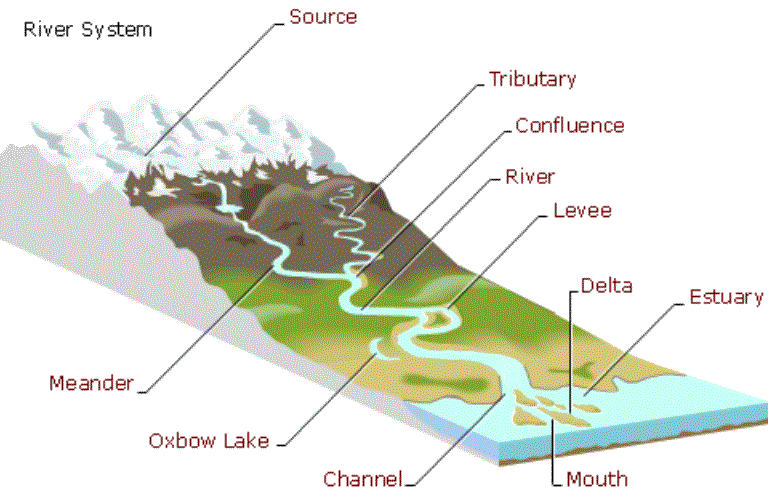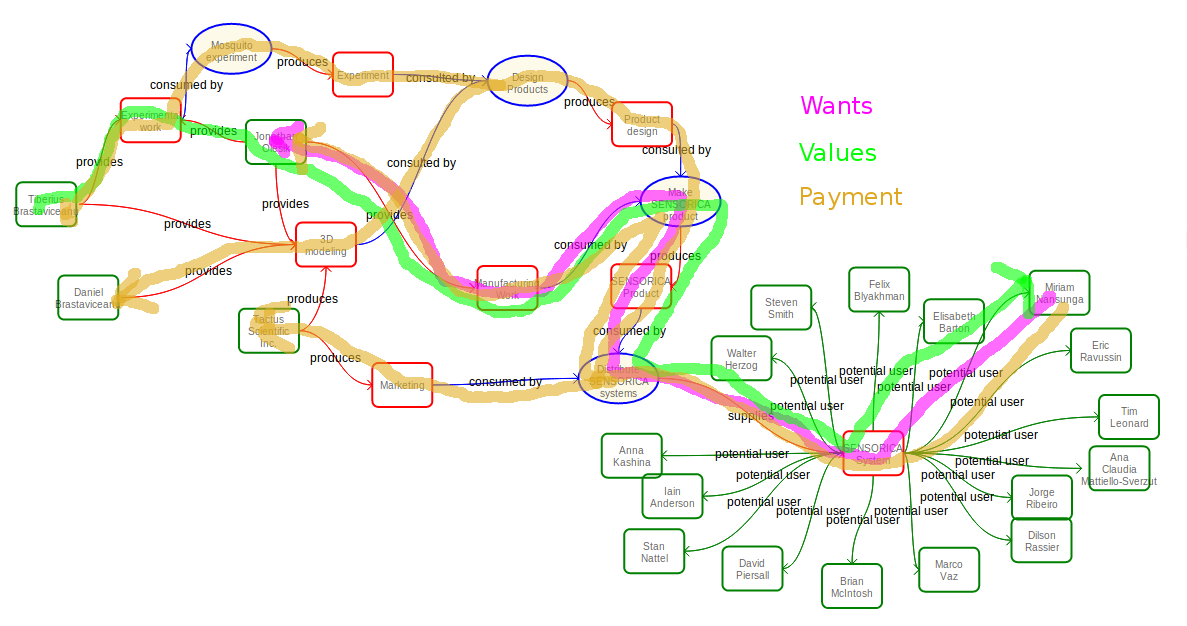Value Streams
This the first stab at explaining a valuable offshoot of the Value Accounting (NRP) app: Value Streams.
Update: We have everything in the required structures and logic to do this. We need mostly the ability to visualize it on the fly and publish as subscribable streams, which is coming...
Value Streams are the information streams that flow back and forth from one corner of a value network to another.
Value Streams are similar to Activity Streams in social networks. Activity streams are some combination of very popular and occasionally annoying. Value streams should not be annoying, because they will be about valuable stuff, and they will help value creators do their work. They will be generated by economic activities, not "whatever", and follow the patterns of the value network.
If you think of a value network as a river system (although the analogy breaks down after awhile), upstream toward the source you find the creators of values and downstream in the delta you find the people who use the values created.
Needs, wants and ideas of what-could-be rise up from the delta like jazz and ripple upstream through layers of value creators. If the demand can be met by a defined recipe, the value accounting system will explode through the recipes and schedule the work that will fill the demand. If it's a new idea, a group will need to organize to design a way to do it, and the group will include whoever came up with the idea.
Then the products and services to fill the demands travel downstream. And the returns (money or other compensation of value) streams back through the network to the contributors of value.
Here's an example from the SENSORICA value system:
Miriam Nansunga wants a Mosquito Scientific Instrument System. Her desire floats back along the network until it hits Jonathan Olesik who will make the products in the system. Jonathan needs Tiberius Brastaviceanu to do some experimental work on one of the products before he makes it. Then the products travel along the network to Miriam, who pays for them. The payment is distributed back along the network to all of the people who contributed to the products.
Another angle on value streams is that they have ripples, like throwing a rock into a pool. When a new or changed event happens downstream (like a new idea or need or desire), it will have ripple effects upstream, following the nodes in the network. When something happens upstream, like a material shortage or energy outage, it will have ripple effects downstream. (And the ripples can be visualized just like Google+ ripples.)
Along the streams live people. And here the analogy breaks down. One person may interact with the streams at many points: as a source of ideas, as a creator of value, as a person to be notified when a need appears for their particular abilities, or when something they requested becomes available from the network, or when a ripple effects them. (All this makes clear that it is a stream of bits, not of water.)
The value accounting software will also contain something like IFTTT (If This Then That) internally, and could also be used by IFTTT externally. Internally, the system will use Event-Condition-Action-Rules, where when an event occurs in a condition (for example, a material shortage in a manufacturing process), the system will follow a rule set up by the people responsible for the process (for example, select a substitute if available, or notify the responsible people for human judgment).
Value streams could also connect value networks with each other. If they do, you could start to think of value streams as an economic nervous system.

